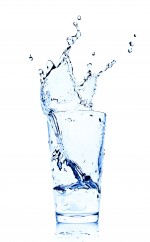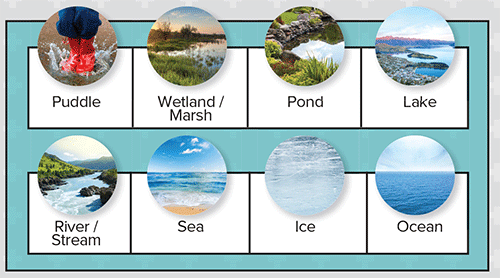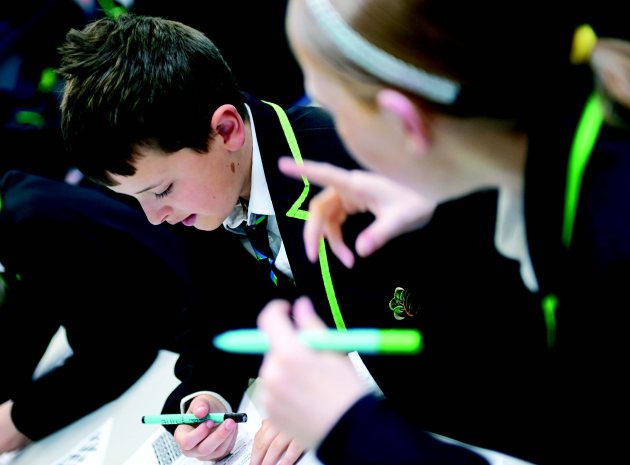Today you will…
...Extend your knowledge and understanding of how vital fresh water is to both humans and animals, and what happens when it is in short supply
How can we increase people’s awareness of the seriousness of the shortage of fresh water across the globe? It’s the world’s most precious resource, but it seems to be everywhere, giving the impression that things are okay, when in fact, this is not the case at all. The purpose of this lesson plan is to make students aware of the effects of human behaviour on the environment, through focusing on our impact on life in the water. This fits in well with KS3 geography, as it engages locational knowledge, global awareness, weather and climate, urban change and sustainable development – crossing and interweaving between the component parts of these areas of the curriculum.
The idea is to encourage students to be independent in their research, before bringing their findings to the group and having thought provoking discussion. Pupils are given the task of promoting the right to clean safe water for wildlife, from tadpoles to starfish and from killer whales to coral. They will learn about water, its animal inhabitants and geography – then ‘become the creatures that need it’, imagining what they would be saying if they could speak for themselves and for conservation. 2013 has been designated the United Nations International Year of Water Cooperation, so there is a lot of timely information to hand.
This project can happen over several lessons; it could also be done in an after school club or as enrichment.

Starter activity
Show the class some images of water in various contexts – from a drink in a glass, to a great ocean. Together, collect a list of words and phrases that the pictures inspire. Then explain to students that globally, fresh water is in critically short supply. Statistically, the number of children that die from water-related diseases is the equivalent of 20 jumbo jets crashing every single day (WaterAid). Climate change is causing ice to melt, enhancing the warming effect still further, and leading to an increased concentration of salt in the world’s oceans, and this in turn affects how currents flow. Excess CO2 is causing ocean acidification, which has a detrimental effect on our coral and shellfish, and this damages the food chain and leads to species loss.
Human intervention, for example indiscriminate trawling of fish, oceans filling with plastic trash that eventually breaks apart entering the food-chain, and ponds and streams being built over, all have a massive impact on water species. Does this information change the way your learners look at the original images?
Main Activities
1. Home sweet home
Show learners a wall display of different types of water.

Divide learners into teams, and allocate one of the habitats shown on the wall display to each (a fun way of doing this might be to write them on stones and get teams to pick them from a tank or bowl of water) . Their task is to research their habitat as thoroughly as possible, particularly with respect to which species might occupy it. They can structure their research as they please, but suggestions could include: where to find examples of the habitat; pros and cons of the environment for various creatures; how species may be affected by climate change and other human habits such as factory waste or agricultural practices like adding nitrates to the soil. Make sure they keep careful notes!
Finally, students should choose a single species from their habitat that they would like to turn into.
2. Going deeper…
Now it’s time for the students to become much more intimately acquainted with their chosen species. Give them time to find out as much as they can about its evolution, life cycles, predators and eating habits, before challenging them to put themselves in the creature’s skin and write as many sentences as they can describing what it’s like to see life through the eyes of a water snail living in the school pond or being a hermit crab in search of a new shell!
3. Making the case
Ask the teams to plan a presentation, from the point of view of their chosen species, about why their home is so special and what human beings need to do to protect it. This will be shared with the rest of the class, and at the end, a vote will be taken on which species the children would most like to preserve. It is always interesting to consider the reasons why the winners were selected: was it the most dramatic presentation and comical species that won?
Fancy a challenge?
Hot Water is a new national competition for young people, who are being asked to make a movie that’s less than 50 seconds long, on the theme of ‘water’. They can explore any aspect of the topic – whatever is important to them, and inspires their creativity! The competition launches on World Water Day March 22nd, and winning films will be screened at the BFI in November. Find out more at coolitschools.com
Home learning
Design a pond for your school or home. Take into consideration size, location, health and safety issues, and what resources would be needed to build and maintain a beautiful and thriving pond (pondconservation.org.uk)
Find out about and talk to your friends and family about sustainable fishing – speak with your local fishmonger to find out what species we should be eating and those which should be avoided if possible to maintain stocks (fishfight.net goodfishguide.co.uk).
Summary
At the end of the lesson bring everyone together to summarise the main findings about the importance of water to biodiversity. Must it really be a competition for survival? What can we do to help all species, including our own, continue to have access to the water they need? See if, as a group, the students can come up with two lists of ten ways to save water – one for individuals, and the other for corporations, governments and the global community.
Info bar
Additional resources
A ‘Themes and links pack’ to help students with their research will be available at coolitschools.com from March 22nd
Stretch them further
By dipping their toes into this issue, students should become more aware of water as life supporting, crucial to every one of us and in dire need of protection. Why not complete the project with a trip to a local watery environment – pond, river, reservoir or sea – where students can meet some of the creatures they have been discussing?
About the Expert
Jane Langley is the founder of Cool it Schools, a global climate change project for schools. Participation is free, and it’s inclusive of all age groups. Amanda Nicholson helped to write this lesson plan.










